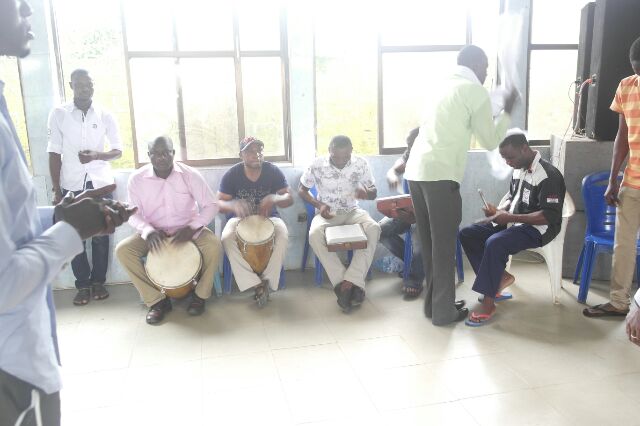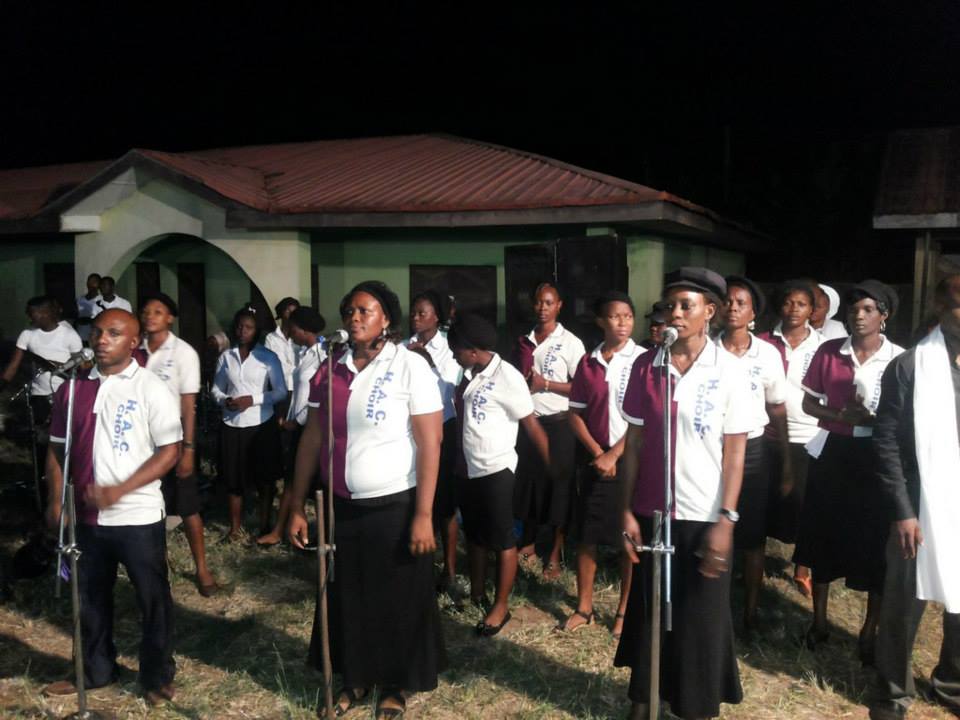Hymn-singing was a defining element of worship in the Holy Apostles’ Church at Ayetoro. From the community’s founding in 1947, congregational song in unison became both an expression of devotion and a mechanism of cohesion, reinforcing the collective ethos of the settlement. By the 1950s, when the Apostles’ services were already renowned across the coastal region, the sound of hymns sung in white garments had become one of the most recognisable features of the “Happy City.”
The services typically opened with processional singing. Congregants filed into the church or open-air meeting spaces, their voices rising in harmony as drums provided a steady rhythm. Archival photographs show men, women, and children in white, standing shoulder to shoulder, hymn books in hand. Oral testimonies confirm that hymn-singing often lasted for extended periods, punctuated by prayers and scripture readings, before the service moved to sermons or communal announcements. The effect was both spiritual and communal: the act of singing together dissolved individuality, emphasising unity under the Apostolic covenant.
The repertoire of hymns included both imported Christian texts and locally adapted compositions. Apostles translated biblical themes into Yoruba and Ilaje idioms, blending the universality of Christian doctrine with the cultural identity of the coastal community. Call-and-response patterns, common in Yoruba musical tradition, were often integrated, producing a distinctive sound that was at once solemn and celebratory. The result was a liturgy that belonged wholly to Ayetoro — rooted in global Christianity, yet unmistakably local in character.
Hymn-singing also served pedagogical functions. Children learned scripture and moral instruction through repeated verses set to music, absorbing lessons of honesty, diligence, and humility in memorable form. Adults found in the hymns a means of collective encouragement, particularly in times of hardship. Oral sources describe moments when erosion or economic difficulty weighed heavily on the settlement, yet the act of lifting voices in song renewed communal strength.
Beyond the spiritual sphere, hymn-singing reinforced Ayetoro’s public image. Visitors from Lagos and international observers frequently remarked on the power of the music, describing services in which hundreds of voices, clad in white, created a soundscape that resonated across the lagoon. For many outsiders, hymn-singing became emblematic of Ayetoro’s distinctiveness: a community where spirituality and everyday life merged seamlessly.

The discipline of singing in unison reflected the community’s broader governance philosophy. Just as no single voice dominated the hymn, no individual was elevated above the collective in civic affairs. The harmony of song mirrored the harmony of governance, both grounded in equality and shared purpose. As one elder later reflected: “When we sang together, we remembered that we were one body, one people, and one covenant.”
Although the physical structures of worship have been eroded by the sea, the memory of hymn-singing endures. Photographs and oral accounts preserve the image of white-garbed Apostles singing in reverence, their voices carried by the coastal wind. These hymns remain one of the most enduring legacies of the Holy Apostles’ Church — an audible expression of faith, identity, and communal resilience in the story of Ayetoro.




